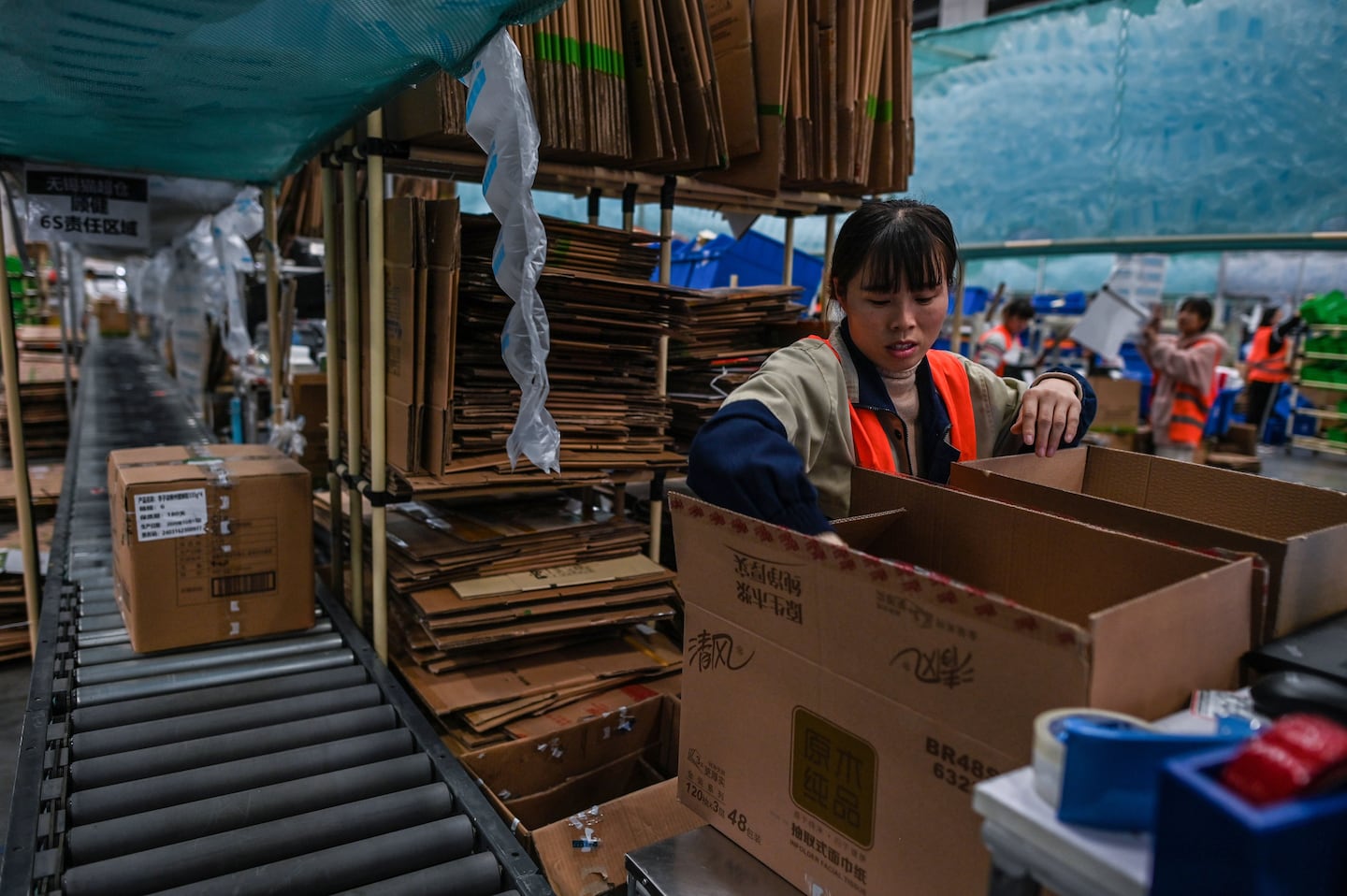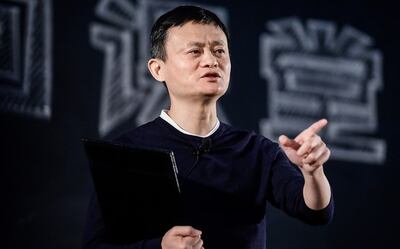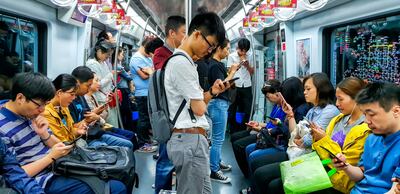
The Business of Fashion
Agenda-setting intelligence, analysis and advice for the global fashion community.

Agenda-setting intelligence, analysis and advice for the global fashion community.

“Are people slowly waking up from the slumber of consumerism?” a user on Zhihu recently asked his peers. While it’s true that most people visiting the popular Chinese question and answer site seek fashion advice on things like must-have lipsticks or sneakers for specific body types, others come to mull over hyper-consumerism, workism and the lack of social mobility facing young professionals in the face of China’s rapid economic growth.
One such user even mapped out her “anti-consumerist budget” for the new year. No new accessories, electronics or clothes (excluding intimates and socks); spending on skin care is allowed if necessary but makeup falls under a “one in, one out” policy; and only one pair of shoes can be purchased for the new year. Dining out and entertainment is limited to around 200 yuan ($30) per month.
The relentless media coverage of China’s enthusiastic consumer culture — from the endless online shopping festivals to its growing share of global spending — paints these perspectives as an aberration. A minority though they may be, proponents of the anti-consumerist agenda are becoming increasingly vocal and influential — even when their frugal message runs counter to policymakers’ efforts to get the economy back on track in the wake of Covid-19.
So far, the government’s encouragement has overwhelmingly worked: much of Chinese spending simply migrated online, to dramatic and lucrative effect, while the country’s GDP hit pre-pandemic rates in the fourth quarter of 2020. During Alibaba’s annual Singles’ Day shopping extravaganza in November, the retail giant’s logistics arm Cainiao processed over 2.3 billion orders in 11 days. The momentum has been so strong, in fact, that the mainland will soon be the first market where e-commerce makes up over 50 percent of total retail sales, according to eMarketer.
ADVERTISEMENT
Few expect a small but growing anti-consumerist movement to dent the dominance of major e-commerce firms. But real and significant changes in consumer psychology among China’s youth — from shifting lifestyle priorities to the embrace of a better work-life balance — mean fashion brands will have to work harder than ever to persuade some of them to spend.
New Economy, New Values
Worldwide, the e-commerce boom has highlighted the real, global cost of a digital economy fuelled in part by the exploitation of an underclass in the tech industry. China, where package volume soared 31 percent in 2020, is no exception. In December, an employee of Alibaba food delivery subsidiary Ele.me died while fulfilling his 34th order of the day; the same month, a Pinduoduo employee died from overwork and the company fanned the flames by allegedly responding to queries on Zhihu by saying that people working for better lives would need to pay with their health.

In January, another Ele.me deliveryman set himself on fire — he was rescued by passers-by and said, “I want my hard-earned money.” Boycotts ensued.
The backlash from these high-profile tragedies coincides with the rise of a nascent conscious consumption movement in China and dovetails with the increased regulatory scrutiny of Chinese tech and retail giants like Alibaba and JD.com in a bid to level the playing field for smaller competitors.
Experts seem to agree that the immediate concern for brands in China is not so much a growing tide against consumption as a reckoning on overspending, particularly among younger demographics. Instead of thinking about what to buy next, people are thinking more about their quality of life, says Ben Cavender, Shanghai-based managing director at China Market Research Group. Meanwhile, regulators have signalled to major firms that market dominance won’t go unchecked.
“There is both a change in sentiment coming from consumers who seem to be realigning values as well as a push from the government to warn against unchecked capitalism,” Cavender says. “[There’s] a push-pull where people want to be successful and provide for their families, while at the same time struggling with the feeling that consumerism and [technological] connectivity don’t necessarily bring happiness or balance to their lives.”
Late last year, a growing number of Post-90s and Post-00s netizens made overconsumption a hot topic. While e-tailers were busy advertising November’s Singles’ Day promotions, hashtags like “youngsters’ opinions of consumption” and “consume without consumerism” racked up more than 150 million views online. On platforms popular among younger consumers, users voiced concerns over the housing market, widening inequality and the price of everyday goods.
ADVERTISEMENT
There is both a change in sentiment coming from consumers who seem to be realigning values as well as a push from the government to warn against unchecked capitalism.
Younger Chinese are also proving the most outspoken online when it comes to the struggles of working under the thumb of big corporations and China’s “996” work culture — a gruelling schedule beginning at 9am, ending at 9pm or later, six days a week. Online, users deploy memes to lament their workloads by identifying themselves as banzhuan (brick-movers), shechu (corporate cattle), jiabangou (overtime dogs) and dagongren (labourers).
The high cost of social mobility is a frustration being felt beyond the digitally savvy circles and the tech companies where it originated. “It’s probably most prevalent in big tech as well as high-pressure white collar jobs, but the overall sentiment is more broad than that,” Cavender adds. How this apparent shift in priorities voiced in online forums will impact fashion companies’ bottom lines is another matter.
Too Big to Fail
The fact that younger professionals in China deplore the rat race doesn’t necessarily mean they’re extricating themselves from the consumption it powers. Backlash against major e-commerce companies is now a global phenomenon, says Deloitte China’s chief economist Xu Sitao, but the difference between China and its Western counterparts is the pervasiveness of the former’s digital ecosystem and platforms that dominate it.
Younger generations may be speaking out against big tech and retail, but they also rely more on the convenience that platforms provide than their elders do. Take WeChat, which encompasses payments, social media, food delivery, ride hailing, luxury shopping and more. “You cannot live without them,” says Xu.

In time, the aggressive approach of online shopping festivals and the toll borne by delivery workers may have a wearing effect on some people, says Amrita Banta, managing director and co-founder of Agility Research. But it’s unlikely that consumer fatigue and wider discontent will have a sizeable financial impact on hegemons like Alibaba and Pinduoduo.
At present, the platforms (save for Pinduoduo, which was booted from its sponsorship of the annual Spring Festival gala in February due to its aforementioned misstep) continue to do exceptionally well. Where Alibaba founder Jack Ma came under fire for endorsing the 996 culture in 2019 by saying that employees working shorter hours “won’t taste the happiness and rewards of hard work,” the company emerged unscathed and has only become more powerful.
“The love for online shopping is still continuing to be bigger than some of the other issues that have come along,” says Banta. Meanwhile, Xu reckons that regulators, rather than consumers, will be the forces keeping firms in check.
ADVERTISEMENT
Buy Less, but Better
Values are changing, nonetheless. “Consumers still want to buy, but they want to buy differently,” said Banta, referring to the pandemic’s acceleration of various strands of conscious consumption.
Luxury brands, in particular, should consider whether they can count on the same generation of young aspirants to continue racking up credit card debt to fuel the segment’s growth, where the debt-to-income ratio of Post-90s Chinese reached a whopping 1,850 percent according to a HSBC report from 2018.
According to Banta, some consumers who can afford premium and high-end goods are now buying fewer things, but spending their money on more expensive, investment-worthy products. To be sure, multiple posts on Chinese social media about spending less are looking to save money by making more of it, or gaoqian.
Consumers still want to buy, but they want to buy differently.
As is the case in other markets, a company’s values are becoming a bigger factor for younger shoppers in China, who “look beyond the brand,” says Banta. Businesses can benefit from this shift by peddling a combination of both new, trendy offerings (like limited edition capsule collections, collaborations and holiday collections) and more timeless classic, iconic styles, while communicating the ways they are working to become more responsible. Personalised items and an emphasis on craftsmanship are also ways brands can distance themselves from the never-ending “new in” pages on e-commerce sites.
Conscious consumption will likely become a long-term fixture in China’s consumer psyche. Part of this comes down to millennials having children and thinking about what life will be like for future generations, says Cavender. “Longer term, there is going to be a lot more dialogue about consumption, what people consume, and how people consume.”
However, this increasingly heated debate could make it tricker to drive the levels of growth on a quarterly basis that executives have come to expect from China. Cavender says that companies “are going to have to find ways to succeed in a market where they may need to have much deeper customer engagement.”
Related Articles:
Will Millennial Debt Threaten China’s Luxury Rebound?
China’s Sustainable Fashion Paradox
Amazon vs Alibaba: Which E-Commerce Giant Is Winning the Covid-19 Era?
With consumers tightening their belts in China, the battle between global fast fashion brands and local high street giants has intensified.
Investors are bracing for a steep slowdown in luxury sales when luxury companies report their first quarter results, reflecting lacklustre Chinese demand.
The French beauty giant’s two latest deals are part of a wider M&A push by global players to capture a larger slice of the China market, targeting buzzy high-end brands that offer products with distinctive Chinese elements.
Post-Covid spend by US tourists in Europe has surged past 2019 levels. Chinese travellers, by contrast, have largely favoured domestic and regional destinations like Hong Kong, Singapore and Japan.